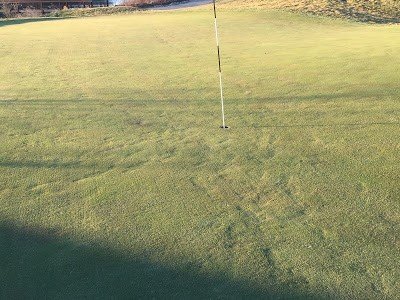Smarter Bunkers, Better Golf: All about the Billy
Bunkers are a fixture in golf, encouraging strategy and adding aesthetic interest to golf courses around the globe. The earliest Scottish bunkers were naturally occurring—rugged coastal areas of wind-blown sand speckled with vegetation. Golfers’ expectations for bunker playability have increased throughout the history of the sport, and course management teams struggle to overcome major rain events and subsequent washouts.
The idea for a better bunker—one that could meet golfer expectations and require considerably less maintenance—started at Augusta National in the early eighties when then-superintendent
Billy Fuller built a bunker that minimized sand erosion and contamination during heavy rains. Fuller introduced the Billy Bunker to the industry—a model with a surprisingly simple composition: a two-inch gravel layer that covered a herringbone tile system on the bunker floor, all capped with a liner that separated the gravel from the bunker sand. The gravel aided draining into the tile foundation, and the liner kept the sand in place.
The Billy Bunker model was simple; it was effective and revolutionary, cutting post-rain bunker maintenance by more than 80 percent. The only weakness lay in the liner, which was often snagged by rakes and golf clubs and became exposed around the edges of the bunkers.
Enter the Better Billy Bunker, a similar model with a simple improvement: a substitute for the liner. “We worked with a chemical company to develop a special polymer spray that binds the gravel layer while remaining porous,” says Todd Jenkins, vice president of Better Billy Bunkers. No more lining, no more snags, and no more pesky liner replacements. The polymer spray was the missing link to truly better bunkers, and now Better Billy Bunkers are benefitting courses—and their agronomy teams and golfers—all over the world.
The Advantage
“People in the industry say there are three priorities when it comes to course architecture: Drainage, drainage, drainage,” says Todd, and for courses with Better Billy Bunkers, the superior drainage has been a game-changer. “The polymer-coated gravel layer in our bunkers allows water to pass through at a rate often exceeding 2,500 inches per hour. If water is properly diverted around bunkers, even during five, six, seven-inch rain events, the bunker sand hardly moves,” he says.
Bunker washout is a substantial concern for golf courses, contaminating bunker sand and making it unattractive and difficult to play. Maintenance teams spend countless hours repairing bunkers after major rain events; in fact, for many courses, removing and replacing sand accounts for a majority of labor costs. “The biggest waste of time and money in the industry is maintenance team personnel standing in a bunker with a shovel,” says Todd. Then there’s the playability of the course to consider. “Golfers know they’ll have playable bunkers no matter the weather, so they won’t stay away after significant rains,” says Todd. Plus, when courses spend less time and money on bunker maintenance, they have more resources at their disposal for other areas of the course—like fairways and greens—that are more pivotal to golfers’ experiences.
Making Great Courses Better
Courses all over the world—including the sport’s most elite—are choosing to invest in Better Billy Bunkers as the solution to their bunker problems. Better Billy Bunkers’ list of clients includes Gleneagles’ PGA Centenary Course in Scotland, a Jack Nicklaus design that was the chosen venue for the 2014 Ryder Cup. Hazeltine National Golf Club in Chaska, Minnesota, installed Better Billy Bunkers before it hosted the 2016 Ryder Cup and, to prepare for its large national membership tournament and the 2019 U.S. Open, Winged Foot Country Club in Mamaroneck, New York, installed Better Billy Bunkers across its 36 holes.
Several Dormie Network clubs have also recently invested in Better Billy Bunkers. Briggs Ranch, host of the Dormie Network Classic (a Korn Ferry Tour stop in April 2019), has installed greenside and fairway Better Billy Bunkers, while Victoria National (the host of the Korn Ferry Tour Championship), Dormie Club, and ArborLinks are planning future installations. It’s a list of clubs that is looking to make the great golf at their courses even better. “It’s hard to put a number on membership satisfaction,” says Todd, “but happy members tend to be good for business.” At the end of the day, golfer experience is crucial to not only the success of courses, but the future of the sport itself.
Water passes through the porous polymer-coated gravel layer in Better Billy Bunkers at a rate that often exceeds 2,500 inches per hour.













